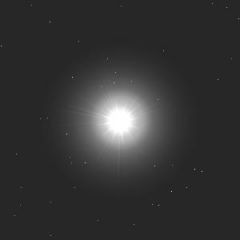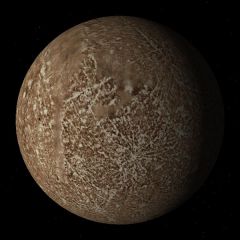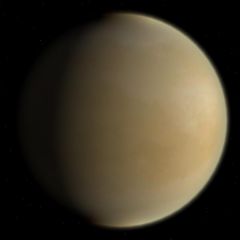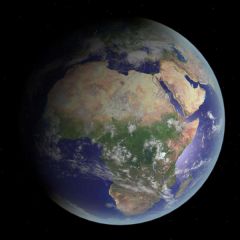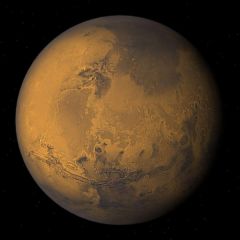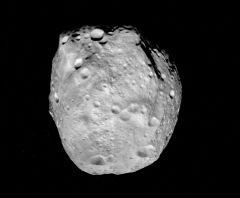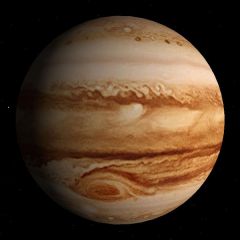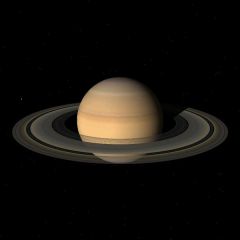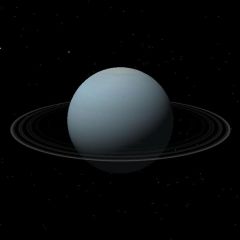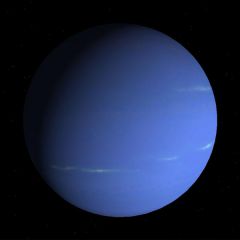Difference between revisions of "List of videos by 20 years: An Orbiter Documentary"
Jump to navigation
Jump to search
(Tables.) |
(Tables.) |
||
| Line 17: | Line 17: | ||
|- | |- | ||
!bgcolor="lightsteelblue" colspan="2"|Orbital Characteristics* | !bgcolor="lightsteelblue" colspan="2"|Orbital Characteristics* | ||
| + | |- | ||
| + | |width="30%"|Epoch||align="right" width="50%"|J2000 (1 January 2000) | ||
|- | |- | ||
|width="30%"|Apoapsis||align="right" width="50%"| | |width="30%"|Apoapsis||align="right" width="50%"| | ||
| Line 184: | Line 186: | ||
|- | |- | ||
!bgcolor="lightsteelblue" colspan="2"|Orbital Characteristics* | !bgcolor="lightsteelblue" colspan="2"|Orbital Characteristics* | ||
| + | |- | ||
| + | |width="30%"|Epoch||align="right" width="50%"|J2000 (1 January 2000) | ||
|- | |- | ||
|width="30%"|Apoapsis||align="right" width="50%"| | |width="30%"|Apoapsis||align="right" width="50%"| | ||
| Line 205: | Line 209: | ||
|width="30%"|Inclination||align="right" width="30%"|7.00487° <br> (0.122258 radian) | |width="30%"|Inclination||align="right" width="30%"|7.00487° <br> (0.122258 radian) | ||
|- | |- | ||
| − | |width="30%"|Longitude of the ascending node (LAN)||align="right" width="30%"| | + | |width="30%"|Longitude of the ascending node (LAN)||align="right" width="30%"|48.33167° <br> (0.8435468 Radian) |
|- | |- | ||
|width="30%"|Time of periapsis||align="right" width="30%"| | |width="30%"|Time of periapsis||align="right" width="30%"| | ||
| Line 285: | Line 289: | ||
|- | |- | ||
!bgcolor="lightsteelblue" colspan="2"|Orbital Characteristics* | !bgcolor="lightsteelblue" colspan="2"|Orbital Characteristics* | ||
| + | |- | ||
| + | |width="30%"|Epoch||align="right" width="50%"|J2000 (1 January 2000) | ||
|- | |- | ||
|width="30%"|Apoapsis||align="right" width="50%"| | |width="30%"|Apoapsis||align="right" width="50%"| | ||
| Line 306: | Line 312: | ||
|width="30%"|Inclination||align="right" width="30%"|3.39471° <br> (0.0592489 radian) | |width="30%"|Inclination||align="right" width="30%"|3.39471° <br> (0.0592489 radian) | ||
|- | |- | ||
| − | |width="30%"|Longitude of the ascending node (LAN)||align="right" width="30%"| | + | |width="30%"|Longitude of the ascending node (LAN)||align="right" width="30%"|76.68069° <br> (1.157998 radian) |
|- | |- | ||
|width="30%"|Time of periapsis||align="right" width="30%"| | |width="30%"|Time of periapsis||align="right" width="30%"| | ||
| Line 386: | Line 392: | ||
|- | |- | ||
!bgcolor="lightsteelblue" colspan="2"|Orbital Characteristics* | !bgcolor="lightsteelblue" colspan="2"|Orbital Characteristics* | ||
| + | |- | ||
| + | |width="30%"|Epoch||align="right" width="50%"|J2000 (1 January 2000) | ||
|- | |- | ||
|width="30%"|Apoapsis||align="right" width="50%"| | |width="30%"|Apoapsis||align="right" width="50%"| | ||
| Line 407: | Line 415: | ||
|width="30%"|Inclination||align="right" width="30%"|0.00005° <br> (8×10<sup>-7</sup> radian) | |width="30%"|Inclination||align="right" width="30%"|0.00005° <br> (8×10<sup>-7</sup> radian) | ||
|- | |- | ||
| − | |width="30%"|Longitude of the ascending node (LAN)||align="right" width="30%"| | + | |width="30%"|Longitude of the ascending node (LAN)||align="right" width="30%"|-11.26064° <br> (-0.1700532 radian) |
|- | |- | ||
|width="30%"|Time of periapsis||align="right" width="30%"| | |width="30%"|Time of periapsis||align="right" width="30%"| | ||
| Line 490: | Line 498: | ||
|- | |- | ||
!bgcolor="lightsteelblue" colspan="2"|Orbital Characteristics* | !bgcolor="lightsteelblue" colspan="2"|Orbital Characteristics* | ||
| + | |- | ||
| + | |width="30%"|Epoch||align="right" width="50%"|J2000 (1 January 2000) | ||
|- | |- | ||
|width="30%"|Apoapsis||align="right" width="50%"| | |width="30%"|Apoapsis||align="right" width="50%"| | ||
| Line 511: | Line 521: | ||
|width="30%"|Inclination||align="right" width="30%"|1.85061° <br> (0.0322992 radian) | |width="30%"|Inclination||align="right" width="30%"|1.85061° <br> (0.0322992 radian) | ||
|- | |- | ||
| − | |width="30%"|Longitude of the ascending node (LAN)||align="right" width="30%"| | + | |width="30%"|Longitude of the ascending node (LAN)||align="right" width="30%"|49.57854° <br> (0.7487136 radian) |
|- | |- | ||
|width="30%"|Time of periapsis||align="right" width="30%"| | |width="30%"|Time of periapsis||align="right" width="30%"| | ||
| Line 698: | Line 708: | ||
|- | |- | ||
!bgcolor="lightsteelblue" colspan="2"|Orbital Characteristics* | !bgcolor="lightsteelblue" colspan="2"|Orbital Characteristics* | ||
| + | |- | ||
| + | |width="30%"|Epoch||align="right" width="50%"|J2000 (1 January 2000) | ||
|- | |- | ||
|width="30%"|Apoapsis||align="right" width="50%"| | |width="30%"|Apoapsis||align="right" width="50%"| | ||
| Line 719: | Line 731: | ||
|width="30%"|Inclination||align="right" width="30%"|1.60530° <br> (0.0280178 radian) | |width="30%"|Inclination||align="right" width="30%"|1.60530° <br> (0.0280178 radian) | ||
|- | |- | ||
| − | |width="30%"|Longitude of the ascending node (LAN)||align="right" width="30%"| | + | |width="30%"|Longitude of the ascending node (LAN)||align="right" width="30%"|100.55615° <br> (1.518555 radian) |
|- | |- | ||
|width="30%"|Time of periapsis||align="right" width="30%"| | |width="30%"|Time of periapsis||align="right" width="30%"| | ||
| Line 811: | Line 823: | ||
|- | |- | ||
!bgcolor="lightsteelblue" colspan="2"|Orbital Characteristics* | !bgcolor="lightsteelblue" colspan="2"|Orbital Characteristics* | ||
| + | |- | ||
| + | |width="30%"|Epoch||align="right" width="50%"|J2000 (1 January 2000) | ||
|- | |- | ||
|width="30%"|Apoapsis||align="right" width="50%"| | |width="30%"|Apoapsis||align="right" width="50%"| | ||
| Line 832: | Line 846: | ||
|width="30%"|Inclination||align="right" width="30%"|2.48446° <br> (0.0433620 radian) | |width="30%"|Inclination||align="right" width="30%"|2.48446° <br> (0.0433620 radian) | ||
|- | |- | ||
| − | |width="30%"|Longitude of the ascending node (LAN)||align="right" width="30%"| | + | |width="30%"|Longitude of the ascending node (LAN)||align="right" width="30%"|113.71504° <br> (1.717275 radian) |
|- | |- | ||
|width="30%"|Time of periapsis||align="right" width="30%"| | |width="30%"|Time of periapsis||align="right" width="30%"| | ||
| Line 936: | Line 950: | ||
|- | |- | ||
!bgcolor="lightsteelblue" colspan="2"|Orbital Characteristics* | !bgcolor="lightsteelblue" colspan="2"|Orbital Characteristics* | ||
| + | |- | ||
| + | |width="30%"|Epoch||align="right" width="50%"|J2000 (1 January 2000) | ||
|- | |- | ||
|width="30%"|Apoapsis||align="right" width="50%"| | |width="30%"|Apoapsis||align="right" width="50%"| | ||
| Line 957: | Line 973: | ||
|width="30%"|Inclination||align="right" width="30%"|0.76986° <br> (0.0134366 radian) | |width="30%"|Inclination||align="right" width="30%"|0.76986° <br> (0.0134366 radian) | ||
|- | |- | ||
| − | |width="30%"|Longitude of the ascending node (LAN)||align="right" width="30%"| | + | |width="30%"|Longitude of the ascending node (LAN)||align="right" width="30%"|74.22988° <br> (1.1209874 radian) |
|- | |- | ||
|width="30%"|Time of periapsis||align="right" width="30%"| | |width="30%"|Time of periapsis||align="right" width="30%"| | ||
| Line 1,052: | Line 1,068: | ||
|- | |- | ||
!bgcolor="lightsteelblue" colspan="2"|Orbital Characteristics* | !bgcolor="lightsteelblue" colspan="2"|Orbital Characteristics* | ||
| + | |- | ||
| + | |width="30%"|Epoch||align="right" width="50%"|J2000 (1 January 2000) | ||
|- | |- | ||
|width="30%"|Apoapsis||align="right" width="50%"| | |width="30%"|Apoapsis||align="right" width="50%"| | ||
| Line 1,073: | Line 1,091: | ||
|width="30%"|Inclination||align="right" width="30%"|1.76917° <br> (0.0308778 radian) | |width="30%"|Inclination||align="right" width="30%"|1.76917° <br> (0.0308778 radian) | ||
|- | |- | ||
| − | |width="30%"|Longitude of the ascending node (LAN)||align="right" width="30%"| | + | |width="30%"|Longitude of the ascending node (LAN)||align="right" width="30%"|131.72169° <br> (1.9892037 radian) |
|- | |- | ||
|width="30%"|Time of periapsis||align="right" width="30%"| | |width="30%"|Time of periapsis||align="right" width="30%"| | ||
| Line 1,162: | Line 1,180: | ||
|- | |- | ||
!bgcolor="lightsteelblue" colspan="2"|Orbital Characteristics* | !bgcolor="lightsteelblue" colspan="2"|Orbital Characteristics* | ||
| + | |- | ||
| + | |width="30%"|Epoch||align="right" width="50%"|J2000 (1 January 2000) | ||
|- | |- | ||
|width="30%"|Apoapsis||align="right" width="50%"| | |width="30%"|Apoapsis||align="right" width="50%"| | ||
| Line 1,183: | Line 1,203: | ||
|width="30%"|Inclination||align="right" width="30%"|17.14175° (0.299180 radian) | |width="30%"|Inclination||align="right" width="30%"|17.14175° (0.299180 radian) | ||
|- | |- | ||
| − | |width="30%"|Longitude of the ascending node (LAN)||align="right" width="30%"| | + | |width="30%"|Longitude of the ascending node (LAN)||align="right" width="30%"|110.30347° <br> (1.6657551 radian) |
|- | |- | ||
|width="30%"|Time of periapsis||align="right" width="30%"| | |width="30%"|Time of periapsis||align="right" width="30%"| | ||
Revision as of 12:22, 20 August 2021
Template
| Template | |
|---|---|
| [[Image:|240px]] | |
| Template in Orbiter | |
| Designation | |
| Name | Template |
| Reference body | Sun |
| Number of satellites | 0 |
| Orbital Characteristics* | |
| Epoch | J2000 (1 January 2000) |
| Apoapsis | |
| Periapsis | |
| Semimajor axis | |
| Eccentricity | |
| Orbital period | |
| Synodic period | N/A |
| Average orbital speed | |
| Mean anomaly | |
| Mean motion | |
| Inclination | |
| Longitude of the ascending node (LAN) | |
| Time of periapsis | |
| Argument of periapsis | |
| Precession Longitude of ascending node | |
| Precession obliquity | |
| Precession period | |
| Physical Characteristics* | |
| Mean radius | |
| Equatorial radius | |
| Polar radius | |
| Flattening | |
| Surface area | |
| Volume | |
| Mass | |
| Mean density | |
| Surface gravity | |
| Escape velocity | |
| Rotation period | |
| Sidereal rotation period | |
| Equatorial rotation velocity | |
| Axial tilt (obliquity) | |
| Right ascension north pole | |
| Declination north pole | |
| Atmosphere* | |
| Atmosphere model | |
| Surface Pressure | |
| Surface Density | |
| Specific gas constant | |
| Specific heat ratio | |
| Ecliptic position from primary* | |
| Note | *Elements given are from Orbiter 2016 |
Mercury
Venus
Earth
Moon
Mars
Phobos
Deimos
Vesta
Jupiter
Io
Europa
Ganymede
Callisto
Saturn
Mimas
Enceladus
Tethys
Dione
Rhea
Titan
Hyperion
Iapetus
Uranus
Miranda
Ariel
Umbriel
Titania
Oberon
Neptune
Proteus
Triton
Nereid
Pluto
| Pluto | |
|---|---|
| 240px | |
| Pluto in Orbiter | |
| Designation | |
| Name | Pluto |
| Reference body | Sun |
| Number of known satellites | 5 |
| Orbital Characteristics* | |
| Epoch | J2000 (1 January 2000) |
| Apoapsis | |
| Periapsis | |
| Semimajor axis | 39.48168677 AU (5.90637627×1012 km) |
| Eccentricity | 0.24880766 |
| Orbital period | |
| Synodic period | N/A |
| Average orbital speed | |
| Mean anomaly | |
| Mean motion | |
| Inclination | 17.14175° (0.299180 radian) |
| Longitude of the ascending node (LAN) | 110.30347° (1.6657551 radian) |
| Time of periapsis | |
| Argument of periapsis | |
| Precession Longitude of ascending node | |
| Precession obliquity | |
| Precession period | |
| Physical Characteristics* | |
| Mean radius | |
| Equatorial radius | |
| Polar radius | |
| Flattening | |
| Surface area | |
| Volume | |
| Mass | |
| Mean density | |
| Surface gravity | |
| Escape velocity | |
| Rotation period | |
| Sidereal rotation period | |
| Equatorial rotation velocity | |
| Axial tilt (obliquity) | |
| Right ascension north pole | |
| Declination north pole | |
| Atmosphere* | |
| Atmosphere model | J71G |
| Surface Pressure | 101.3 KPa |
| Surface Density | 1.225 kg/m3 |
| Specific gas constant | 286.91 J/(K kg) |
| Specific heat ratio | 1.40 |
| Ecliptic position from primary* | |
| Note | *Elements given are from Orbiter 2016 |
